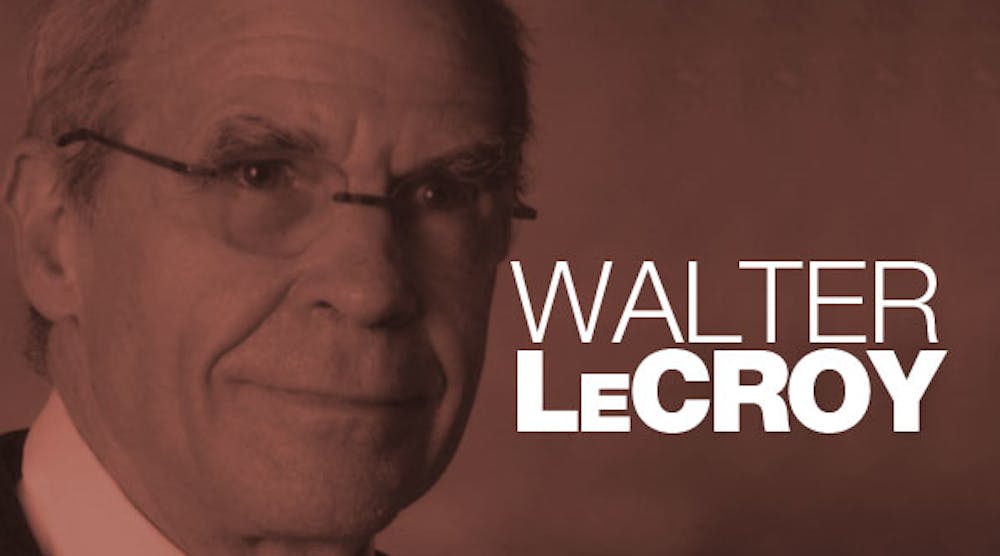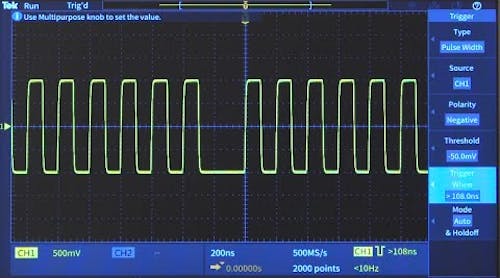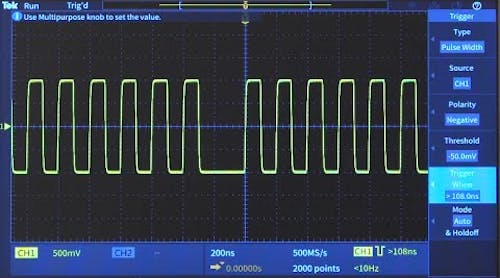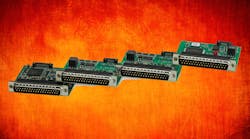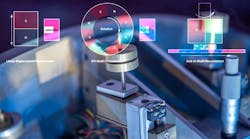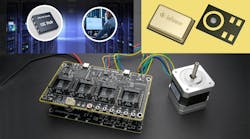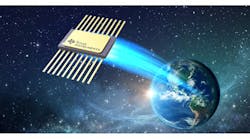Walter O. LeCroy made a capital career out of helping EEs do their jobs. The digital and analog oscilloscopes that LeCroy Corp. manufactures allow engineers to test and measure signal voltages. But he found help and a key component for oscilloscopes in the most unlikely of places - not in a dream or from burning the midnight oil, but in a toy store.
"I knew it could be done and I was noodling with it," LeCroy said. "Then I was in Toys R Us, and there it was, already done."
Vectrex, a video game console with a built-in monitor from the 1980s, served as an inspiration for his company's oscilloscopes. Assimilating the Vectrex's magnetic deflection technology, LeCroy created oscilloscopes that could perform tests and draw results on screen for engineers to evaluate.
But that unusual inspiration is only a piece of the pie that is Walter LeCroy. When he was a boy, his parents gave him a chemistry set, and his uncles gave him a camera. Though he didn't necessary neglect his tubes and beakers, he spent his adolescence and young adulthood behind a lens. He has been snapping shots since he was 10. In fact, he still is a photographer.
He took pictures for an Alabama newspaper while he attended high school. At the University of Alabama he planned to become a "missionary" of photography. But after freshman year, he realized that photography was not in the cards - at least not as a vocation. So he returned to his other childhood fascination, science.
"Certainly, you have to be born with certain propensities, and those have to be nurtured," he said. "Engineers are people who like to know how things work. Someone once asked me what the most important question to an engineer is. 'How does it work?' is what I said."
Leaving the south to attend Columbia University, LeCroy earned a bachelor's degree in physics in 1956. "If I were a native of New York, I wouldn't have made the cut," he said. He may have squeezed into admissions, but Columbia found an engineering savant in him, and he eventually became the chief electronics engineer in the physics department.
"My interest in electronics came from working in the physics department lab," he said. "I could actually do electronics. I got a kick out of that. It's a great way to learn. Maybe the best way."
Out of the Frying Pan, Into the Laundromat
Testing the waters of entrepreneurship, he opened a lab to create modules for capturing and analyzing signatures of subatomic particles in 1964 - out of a conver ted laundromat. LeCroy Research Systems earned enough to eventually move out of the laundromat and landed offices in New York and Switzerland.
Though the company prospered in capturing and analyzing subatomic particles for laboratories in the highly specialized markets of nuclear and particle physics, LeCroy felt that the narrow field's window was closing. So right around his life-changing visit to the toy store, the renamed LeCroy Corp. shifted from particle and nuclear physics to high-end oscilloscopes.
"After about 10 years or so, we realized we had the technology for a digital oscilloscope," he said. "What we didn't know was whether the world would accept scopes from an unknown. We were not known in the bigger world."
The company found continual success in the test and measurement industry. For the next decade, LeCroy Corp. would lean on oscilloscopes. High-energy physics instrumentation would become a tangent service.
"We try to make an engineer's life easier. We try to tell them what's going on," LeCroy said. "In my days, we were card and paper. When it was no longer possible to just eyeball it, the analytical part became important" (see "Oscilloscopes: From Simply Viewing To Complex Signal Analysis" atwww.ptmhosting.com, ED Online 2291).
Using his experience with physics instruments, LeCroy fabricated a standout oscilloscope that could hold its own even in the shadow of industrial giants like Tektronix and Hewlett-Packard (now Agilent Technologies).
"We made the first digital oscilloscope that operated like a digital oscilloscope," LeCroy said. "A lot of oscilloscopes I believe use what was created here, in this office."
公司小于其竞争对手,但是it was in stride with if not leading them in technology. Still, it needed to stay ahead of the curve to stay afloat. In the 1990s, LeCroy Corp. began stripping away the obsolete models from a decade's worth of production and began focusing on local-area networks (LANs) and computer equipment. Though a turbulent course initially, this leap would prove profitable.
Photo Finish
Today, LeCroy is Honorary Chairman of the Board at LeCroy Corp. With the company well intact, he now pursues other ventures. "My interest \\[in electronics\\] is strictly in the company," he said. "I'm not a big iPod man." He has left design and management and returned to his first love.
"I'd like for the company to be known for making serious contributions to measurement technology," he said. "That is an enabling technology for everything else. It's pretty fundamental for humanity, though much of humanity isn't aware of it."
Now, landscapes, textures, patterns, and general things that catch his eye encompass his new subjects of analysis. He even owns an art gallery in Charleston, S.C., where he displays and sells his photographs.
"I love my life in Charleston, but I miss the company a lot," he said. "I miss the involvement. I'm very proud of the scope and the contributions we made to the scope area."
